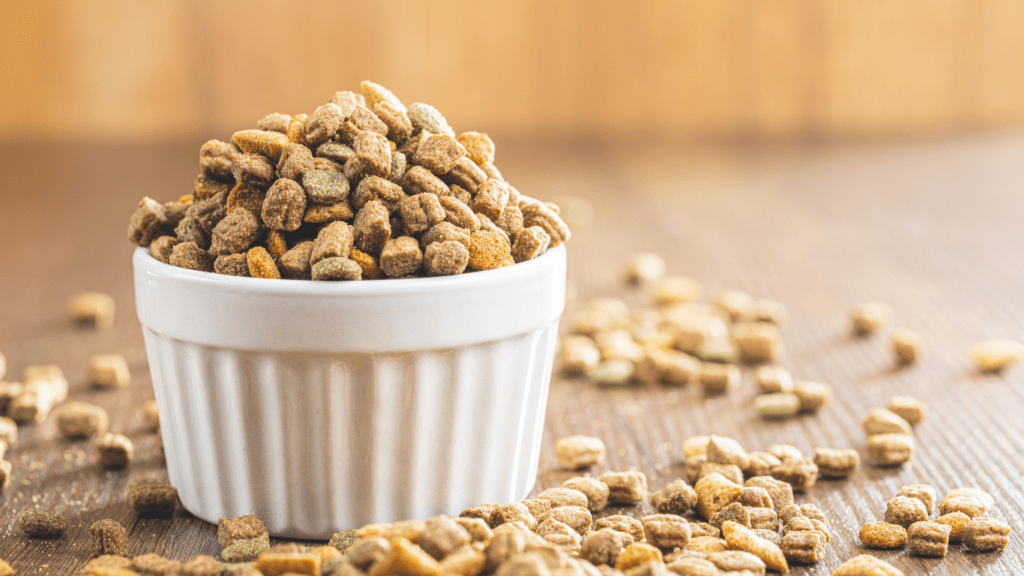Understanding the Need for a Diet Change
Pets may require a diet change due to various health or lifestyle factors. Identifying the key reasons will help ensure your pet’s wellbeing.
Identifying Signs That Your Pet Needs a New Diet
Pets show signs indicating a need for a diet change. Unexplained weight gain or loss often points to nutritional imbalances. Chronic digestive issues, such as diarrhea or constipation, can signal that the current diet isn’t suitable.
Noticeable changes in energy levels or coat condition also serve as red flags. For example, a dull coat might indicate a lack of essential nutrients.
Consultation With a Veterinarian
Consulting a veterinarian is crucial before making any changes. Veterinarians conduct thorough assessments to determine the most suitable diet, considering factors like:
- age
- breed
- health conditions
They can recommend specific foods or brands tailored to meet your pet’s needs. Receiving professional advice helps avoid potential health risks and ensures a smooth transition.
Preparing for the Dietary Transition
Understanding the process of transitioning your pet to a new diet is critical for their health. Let’s explore how to choose the right diet and set an effective transition schedule.
Choosing the Right Diet for Your Pet
Selecting the appropriate diet involves considering your pet’s specific needs and preferences. Veterinarians can offer guidance based on your pet’s age, breed, and health conditions.
Look for high-quality pet food that lists meat as the first ingredient, and avoid products with fillers like corn or soy. Check for any special dietary requirements such as grain-free or hypoallergenic options.
Experiment with small samples to see how your pet reacts before committing to a full bag.
Setting a Transition Schedule
Transitioning should happen gradually to avoid digestive issues. Start by mixing 25% of the new food with 75% of the old food for 3 days. Increase to a 50/50 mix for the next 3 days, then to 75% new food with 25% old food for another 3 days.
Finally, offer 100% of the new diet. Monitor your pet’s stool and behavior for any signs of distress, adjusting the pace if necessary.
Implementing the Diet Change
Transitioning your pet’s diet requires a structured approach to ensure their health and well-being. This section outlines the steps to follow during the diet change process.
Introducing New Foods Gradually
Introduce the new food by mixing it with your pet’s current food. Start with a small portion, such as 25% new food and 75% old food. Over the next 7-10 days, gradually increase the new food while decreasing the old food.
This method minimizes digestive issues. By the end of the period, your pet should be consuming 100% new food. Maintain consistency to help them adapt smoothly.
Monitoring Your Pet’s Reaction to the New Diet
Monitor your pet’s reaction to the new diet closely. Look for signs like changes in stool consistency, appetite, and energy levels. If adverse reactions such as vomiting or diarrhea occur, consult your veterinarian immediately.
Keep an eye on their coat condition and weight too. Documenting these observations helps identify potential issues early and ensures your pet thrives on the new diet.
Maintaining the New Diet

Ensuring your pet continues to thrive on their new diet involves consistent monitoring and adjustments based on their health and lifestyle.
Tips for Long-term Diet Success
- Observe Routine: Keep feeding schedules consistent to maintain your pet’s digestive health and well-being. Regular timing helps establish a stable routine for your pet.
- Use Quality Ingredients: Opt for pet foods with high-quality ingredients that meet their nutritional needs. Look for certifications or recommendations from reputable sources.
- Monitor Health Indicators: Regularly check your pet’s stool consistency, energy levels, coat condition, and weight. These indicators provide insights into how well they’re adapting to the new diet.
- Consult a Vet: Schedule periodic check-ups with your veterinarian to assess your pet’s health and make necessary dietary adjustments. Veterinary guidance ensures the diet remains suitable over time.
- Avoid Overfeeding: Follow feeding guidelines to prevent obesity and its associated health problems. Measure portions accurately and adjust as advised by your vet.
When to Reevaluate Your Pet’s Dietary Needs
- Behavioral Changes: Notice any significant changes in behavior, such as reduced activity or increased irritability. These may indicate a need to reassess their diet.
- Health Conditions: Changes due to age, weight, or medical conditions might necessitate a dietary adjustment. For example, aging pets may require diets with specific nutrients.
- Veterinary Advice: Pay attention to your veterinarian’s recommendations based on regular health check-ups. Professional advice helps in tailoring the diet to current health needs.
- Performance Issues: If your pet shows signs of lethargy, poor coat condition, or weight changes, reevaluating their diet could provide solutions. Altering the diet might enhance overall health.
By maintaining vigilant observation and remaining flexible in dietary adjustments, your pet can continue to enjoy a healthy, balanced life.


